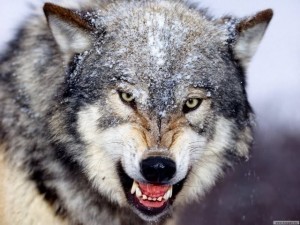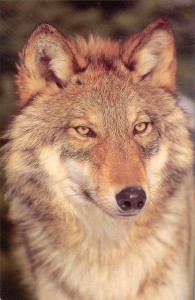NC State recently approved a new logo design by alumnus Jim Cox, a 1966 graduate. His “Eyes of the Wolf” logo was given its blessing by the university to be sold with its trademarks, even though it will not replace the school’s official mascot, the venerable Tuffy the Wolf. According to a recent article in the Davidson County Dispatch, Cox wanted a logo with “more intensity.”
“But there’s never been anything with real intensity, nothing gripping,â€
Cox would find his inspiration for his dream logo thanks to Moultrie artist Arthur Armstrong and his “eyes of the wolf†painting. Captivated by the print, Cox bought the original and then bought the copyright.
Cox tinkered with the design and said he spent some time figuring out how he would incorporate it into a logo. The end result was the hazy design highlighted with “N.C. State Wolfpack†framed around the wolf. The final design is fairly simple, but an alluring one, according to Cox.
“It’s intimidating — you can get fired up over this,†said Cox pointing to his logo.
For me, that’s where the trouble begins. Either Cox or Armstrong or both have little understanding of wolves and their characteristics, or they have a different idea of what “intensity” is when expressed by a gray wolf. Here’s Cox’s design:

Now, compare and contrast that to an actual Grey wolf showing intense aggression:

Look carefully at the shape of the eyes – the difference between Cox/Moultrie’s painted rendering and the real thing — the real wolf display of aggression is far different from the artistic rendering. In short, which wolf would you fear the most, were you to cross them in the wild?
But Why a Grey Wolf Anyway?

You will never come across a grey wolf anywhere in the wilderness in North Carolina. On the edge of their former territory as it is, they have long been extirpated and unseen in the Old North State since at least the middle of the 1800’s. There are, however, wolves in the wild in North Carolina, and NC State has been heavily involved in the reintroduction and recovery of wolves in our woods. The Red Wolf, Canis rufus, was extirpated here by 1980, but that changed when 100 wolves were reintroduced in North Carolina in 1986 – with critical assistance by NC State wildlife biologists.
In fact, NCSU hosts an Environmental Medicine Consortium web site detailing its Red Wolf efforts:
Dr. Michael Stoskopf , Director of the EMC chairs the Red Wolf Recovery Implementation Team, a group of dedicated scientists in key disciplines appointed by the U.S. Fish and Wildlife Service to provide scientific guidance to the field biologists working to implement the adaptive management plan for the wolf. EMC graduate students Karen Beck and Anne Acton have worked to find solutions to key challenges facing the wolf, and red wolves even live on campus in the EMC’s Wild Carnivore Research Center.
Perhaps it is a mere quibble, but one would think that NC State’s marketing would be aware of one of the university’s noted successes and would be eager to incorporate it into any athletic logo as opposed to a chimerical one that is, well, less than inspiring in my opinion anyway. Today 100-120 red wolves call northeastern North Carolina home and is the world’s only wild population of red wolves. If you have ever had the pleasure of being in the Pocosin Lakes NWR, the place they call home and hear their howls far in the distance, it will send shivers up and down your spine.
At the end of the day, would it not be better for any new wolf logo not only display a truly “intense” rendering but also reflect the wilderness of our great state and the efforts of NC State’s scientists to protect it? While Mr. Cox should be commended for trying to bring something new and exciting to NC State, the execution of his design leaves something to be desired and should probably be retooled not only for accuracy but also to celebrate North Carolina and the fine work that NC State’s scientists have done to preserve an important part of our natural heritage.



You must be logged in to post a comment.